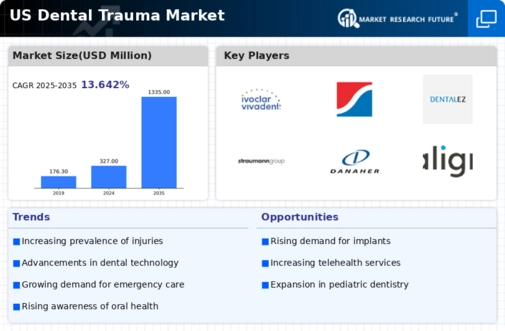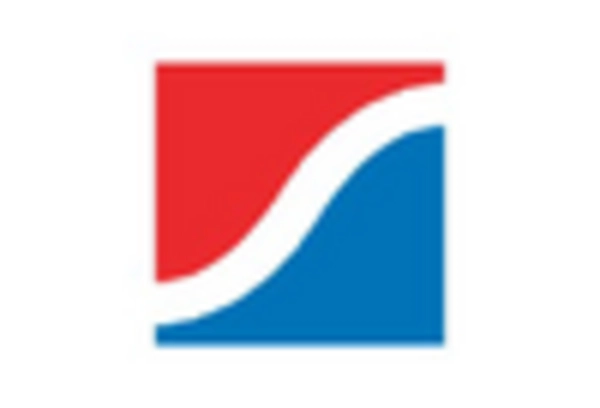Rising Healthcare Expenditures
Healthcare expenditures in the US are on the rise, which is positively impacting the dental trauma market. As individuals allocate more resources to healthcare, there is a corresponding increase in spending on dental services, including trauma care. Data indicates that dental services account for approximately 4% of total healthcare spending in the US, reflecting a growing recognition of the importance of oral health. This trend suggests that patients are more willing to invest in quality dental care following traumatic incidents. The dental trauma market is likely to benefit from this increase in healthcare spending, as more individuals seek timely and effective treatment options for dental injuries. Consequently, dental practices may experience higher patient volumes and revenue growth.
Growing Incidence of Dental Injuries
The dental trauma market is experiencing growth due to the increasing incidence of dental injuries among various age groups. Statistics indicate that approximately 5 million teeth are knocked out each year in the US, primarily affecting children and adolescents. This trend is likely driven by heightened participation in contact sports and recreational activities. As awareness of dental injuries rises, parents and guardians are more inclined to seek preventive measures and treatments, thereby expanding the market. The dental trauma market is poised to benefit from this growing awareness, as more individuals recognize the importance of immediate dental care following an injury. Consequently, dental professionals are increasingly focusing on trauma management, which may lead to enhanced treatment options and improved patient outcomes.
Expansion of Dental Insurance Coverage
The expansion of dental insurance coverage is a key driver for the dental trauma market. As more insurance plans include comprehensive dental care, patients are more likely to seek treatment for dental injuries without the burden of high out-of-pocket costs. Recent data shows that nearly 60% of Americans have some form of dental insurance, which often covers trauma-related procedures. This trend is likely to encourage individuals to pursue necessary treatments promptly, thereby reducing the long-term consequences of untreated dental injuries. The dental trauma market stands to gain from this increased accessibility, as insurance coverage facilitates timely interventions and enhances overall patient outcomes. As a result, dental practices may see a rise in patient engagement and satisfaction.
Technological Innovations in Dental Care
Technological advancements are significantly influencing the dental trauma market. Innovations such as 3D imaging, digital impressions, and minimally invasive surgical techniques are transforming how dental injuries are diagnosed and treated. For instance, the adoption of 3D printing technology allows for the rapid production of dental prosthetics, which can be crucial in trauma cases. Moreover, the integration of tele-dentistry is facilitating remote consultations, enabling timely interventions for patients with dental trauma. The dental trauma market is likely to see increased investment in research and development, as dental professionals strive to incorporate these technologies into their practices. This shift not only enhances treatment efficacy but also improves patient satisfaction, potentially leading to a larger market share.
Increased Focus on Preventive Dental Care
The dental trauma market is benefiting from a growing emphasis on preventive dental care. Public health campaigns and educational initiatives are encouraging individuals to adopt protective measures, such as mouthguards during sports activities. Research suggests that the use of mouthguards can reduce the risk of dental injuries by up to 80%. As awareness of preventive strategies increases, the demand for dental trauma management is expected to rise. The dental trauma market is likely to see a shift towards preventive solutions, with dental professionals advocating for regular check-ups and protective gear. This proactive approach not only mitigates the occurrence of dental injuries but also fosters a culture of oral health awareness, which may contribute to long-term market growth.

















Leave a Comment